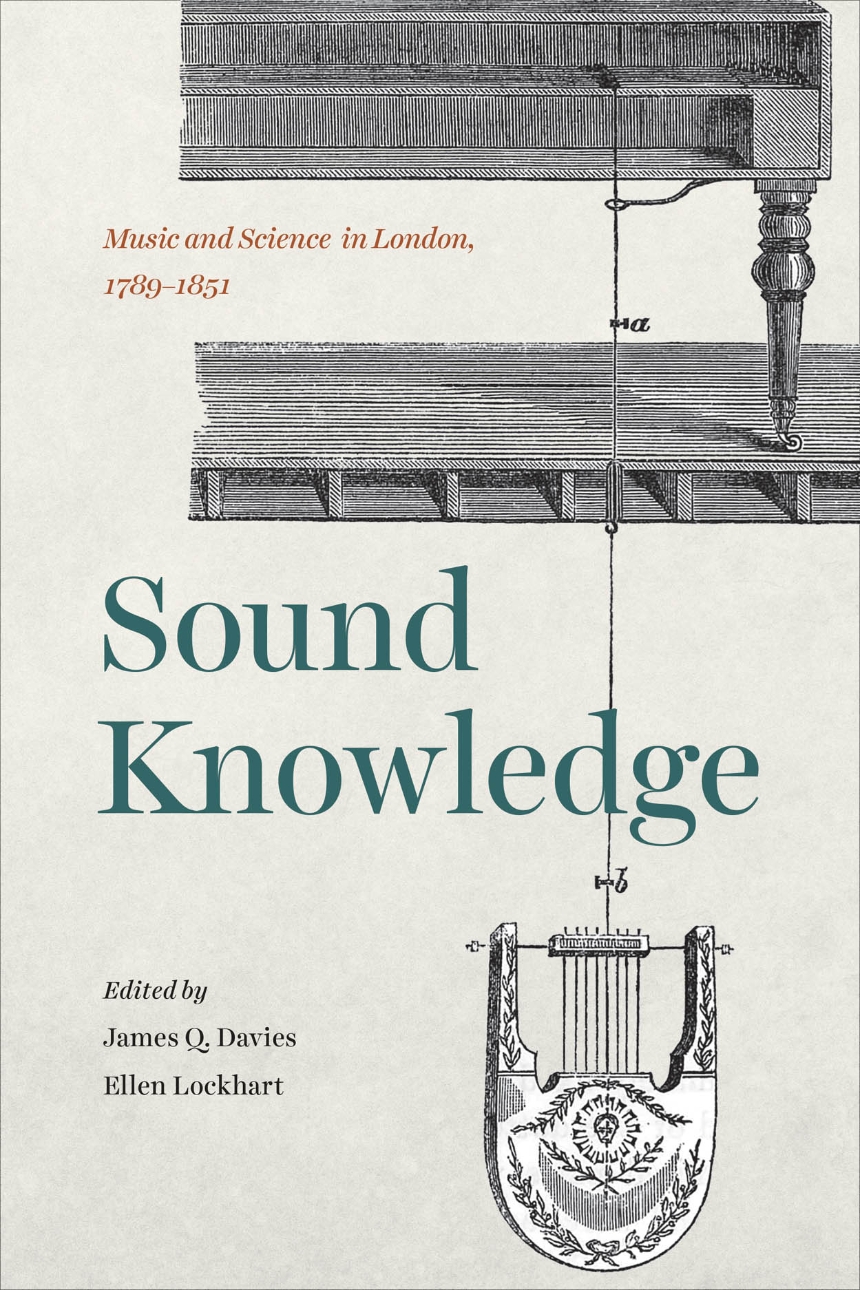Sound Knowledge
Music and Science in London, 1789-1851
What does it mean to hear scientifically? What does it mean to see musically? This volume uncovers a new side to the long nineteenth century in London, a hidden history in which virtuosic musical entertainment and scientific discovery intersected in remarkable ways.
Sound Knowledge examines how scientific truth was accrued by means of visual and aural experience, and, in turn, how musical knowledge was located in relation to empirical scientific practice. James Q. Davies and Ellen Lockhart gather work by leading scholars to explore a crucial sixty-year period, beginning with Charles Burney’s ambitious General History of Music, a four-volume study of music around the globe, and extending to the Great Exhibition of 1851, where musical instruments were assembled alongside the technologies of science and industry in the immense glass-encased collections of the Crystal Palace. Importantly, as the contributions show, both the power of science and the power of music relied on performance, spectacle, and experiment. Ultimately, this volume sets the stage for a new picture of modern disciplinarity, shining light on an era before the division of aural and visual knowledge.
Sound Knowledge examines how scientific truth was accrued by means of visual and aural experience, and, in turn, how musical knowledge was located in relation to empirical scientific practice. James Q. Davies and Ellen Lockhart gather work by leading scholars to explore a crucial sixty-year period, beginning with Charles Burney’s ambitious General History of Music, a four-volume study of music around the globe, and extending to the Great Exhibition of 1851, where musical instruments were assembled alongside the technologies of science and industry in the immense glass-encased collections of the Crystal Palace. Importantly, as the contributions show, both the power of science and the power of music relied on performance, spectacle, and experiment. Ultimately, this volume sets the stage for a new picture of modern disciplinarity, shining light on an era before the division of aural and visual knowledge.
Reviews
Table of Contents
Introduction: Fantasies of Total Description
James Q. Davies and Ellen Lockhart
1. Music as an Object of Natural History
Emily I. Dolan
2. Celestial Mechanisms: Adam Walker’s Eidouranion, Celestina, and the Advancement of Knowledge
Deirdre Loughridge
3. Transparent Music and Sound-Light Analogy ca. 1800
Ellen Lockhart
4. Charles Wheatstone: Musical Instrument Making, Natural Philosophy, and Acoustics in Early-Nineteenth-Century London
Myles W. Jackson
5. Charles Wheatstone’s Enchanted Lyre and the Spectacle of Sound
Melissa Dickson
6. Instruments of Empire
James Q. Davies
7. Good Vibrations: Frankenstein on the London Stage
Sarah Hibberd
8. Engine Noise and Artificial Intelligence: Babbage’s London
Gavin Williams
9. Hearing Things: Musical Objects at the 1851 Great Exhibition
Flora Willson
Acknowledgments
Contributors
Index
James Q. Davies and Ellen Lockhart
1. Music as an Object of Natural History
Emily I. Dolan
2. Celestial Mechanisms: Adam Walker’s Eidouranion, Celestina, and the Advancement of Knowledge
Deirdre Loughridge
3. Transparent Music and Sound-Light Analogy ca. 1800
Ellen Lockhart
4. Charles Wheatstone: Musical Instrument Making, Natural Philosophy, and Acoustics in Early-Nineteenth-Century London
Myles W. Jackson
5. Charles Wheatstone’s Enchanted Lyre and the Spectacle of Sound
Melissa Dickson
6. Instruments of Empire
James Q. Davies
7. Good Vibrations: Frankenstein on the London Stage
Sarah Hibberd
8. Engine Noise and Artificial Intelligence: Babbage’s London
Gavin Williams
9. Hearing Things: Musical Objects at the 1851 Great Exhibition
Flora Willson
Acknowledgments
Contributors
Index
